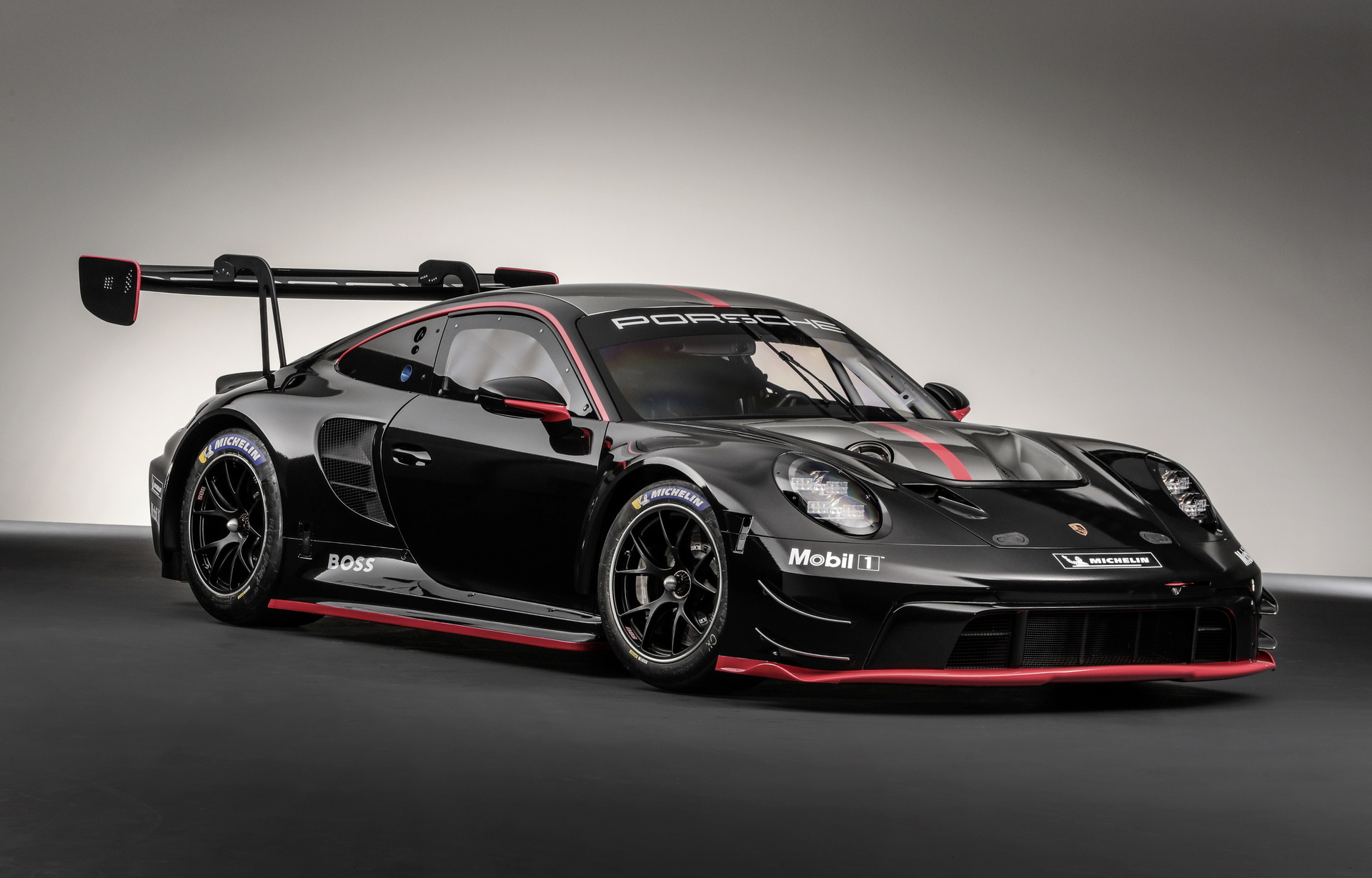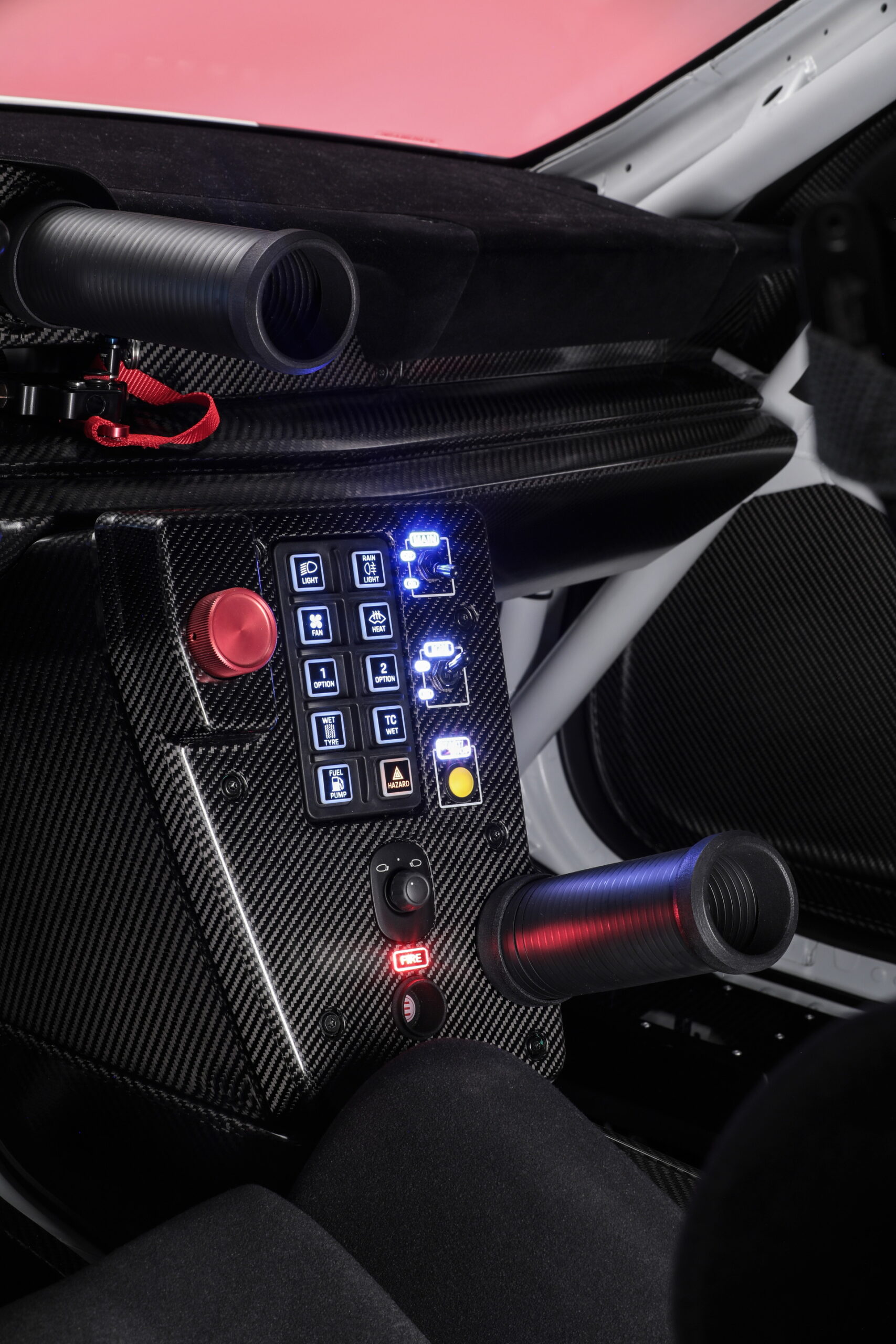Porsche North America has today unveiled its latest generation of GT race car, the 911 GT3 R. With a bigger engine, better aerodynamic performance, and optimized vehicle balance, the new car is intended to be the brand’s most useable 911 race car to date.
The car will compete in the GT3 category, which is the top GT category in North America with the IMSA WeatherTech SportCar Championship and in Europe with the FIA World Endurance Championship. That means that the car will be eligible to take part in the 24 Hours of Le Mans for the first time, and that has had an important role in defining the design remit of the car.
“Drivability is remarkably important to the wide range of drivers that we have competing here and that was a focus of the type 992 911 GT3 R,” said Volker Holzmeyer, CEO of Porsche Motorsport North America. “We have already had overwhelming interest in the car, and we are looking forward to seeing it turn its first wheel here soon.”
Read Also: Porsche Reported To Take 50% Stake In Red Bull Racing
At the center of the car’s performance is, of course, the naturally-aspirated flat-six engine. Based on the 992 911‘s engine, the main improvement is in displacement, which increased five percent, from 3,997 cc to 4,194 cc. The extra size gives it a maximum output of 558 hp (416 kW/565 PS). The main reason for the growth, though, was to make the power and torque bands more useable to suit a wider range of drivers at different experience levels.
The engine is placed, as you’d expect, in the rear of the 911 GT3 R, but it has been tilted forward by 5.5 degrees to create more space for the rear diffuser. Auxiliary components have been moved forward and down into the space in front of the engine, which has had a positive effect on weight balance.
Shifting is handled by a sequential six-speed contest-mesh gearbox that was derived from the 911 GT3 Cup race car. Drivers select gears with paddles behind the steering that control an electronic shift drum actuator for speedy and precise gear changes.
The suspension was also modified, starting at the front with state-of-the-art double wishbones and at the back with a multi-link design. The shock absorbers come from KW and are designed to be easily adjustable. Set-up modifications can be done with shims that do not require time-consuming re-alignment of the suspension after every adjustment. All of which has been done in the name of making the race car easier to use.
The positioning of the central pivot points at the front axle, meanwhile, allows for more space for the aerodynamic concept. As with the 911 RSR, the 911 GT3 R has an elevated underbody that allows more clean air to hit the diffuser and reduces the pitch sensitivity of the car and allows for more downforce without adding any drag. The wheelbase, meanwhile, has been extended to reduce the loads on the rear tires and improve their consistency over long racing stints.
Aluminum monobloc brake calipers and discs are provided by AP. The 390 mm front discs are slotted and made of steel and clamped by six-piston calipers. The rears, meanwhile, are 370 mm across and get four-piston calipers. Almost all of the body panels are made of carbon fiber to keep weight down, while the wheel arches are made of aramid fibers.
Like the auxiliary components, the driver has also moved closer to the middle of the 911 GT3 R. That allowed Porsche to add an ergonomic seat and an improved roll cage for the newly developed FIA side impact mandates. The cockpit has features first proved in other forms of motorsport, like the 911 GT3 Cup car’s 10.3-inch display and a multi-switch concept.
“Our task was less about making the new 911 GT3 R even faster – the classification within performance windows set by the BoP quickly cancels out this advantage,” said Sebastian Golz, the 911 GT3 R’s project manager. “For us, it was primarily about our customers being able to drive the racing car fast for longer. This requires durability and that’s why we focused predominantly on improved drivability.”
Porsche says it also worked to make operating the car cheaper for racing teams. It will be ready for the 2023 racing season and North American customer teams will be able to buy the car through Porsche Motorsports North America at a price of $567,210.













